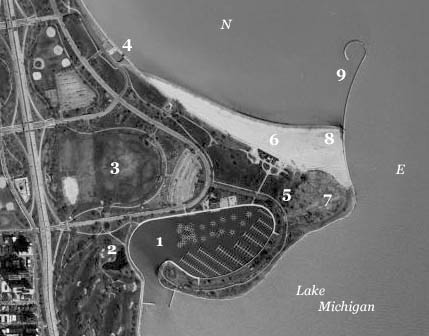ALL OF THE AREAS DESCRIBED BELOW ARE ON PRIVATE PROPERTY, SO DO NOT LEAVE THE ROAD RIGHT-OF-WAY.
Oliver Road runs along the Pecatonica River and feeder streams northwest of Rockford. From IL 75, turn north on Harrison Road and follow it to Oliver Road on the left. After crossing a small stream, the surrounding area opens on to an area of planted prairie grass on the south and a “flood bottom” cornfield on the north. A tree line north of the corn field marks the edge of a stream and the Pecatonica River bottoms. In spring, the corn field is often flooded, and so it is attractive to migrating shorebirds. Species of interest found here are Wilson’s and Red-necked Phalaropes, Willets, Least, Semipalmated, White-rumped, Pectoral, Baird’s, Stilt and Western Sandpipers, several species of plovers, and terns, usually Forster’s, but occasional Black. On the south side of the road, in a small pond surrounded by prairie grass (the pond is visible from your car so you can avoid spooking the birds in it) usually has puddle ducks, a few herons, and, on one spring count, a White-faced Ibis.
About another 1/4 mile down the road is a cattle pasture with an old oxbow. A stand of bur oaks is just behind the oxbow on higher ground. The oxbow runs west to east, then turns north and passes in between stands of old oaks. Bald Eagles are frequently in this area in spring, and the oxbow should be checked for shorebirds and pipits. Flooded fields to the northwest often have small ponds with a lot of waders and ducks (a telescope is necessary).
The road then makes a 90 degree left turn and passes over a small stream that has a beaver dam on the right (west) side. Heck, this stream for Green Heron, Wood Ducks and, in migration, a lot of warblers, particularly on cool days when they are low feeding on insects near the water.
The road comes to a “T” intersection at Knapp Road. By turning right (west) and then left on Eddie Road, you can take Eddie Road back to IL 75.
